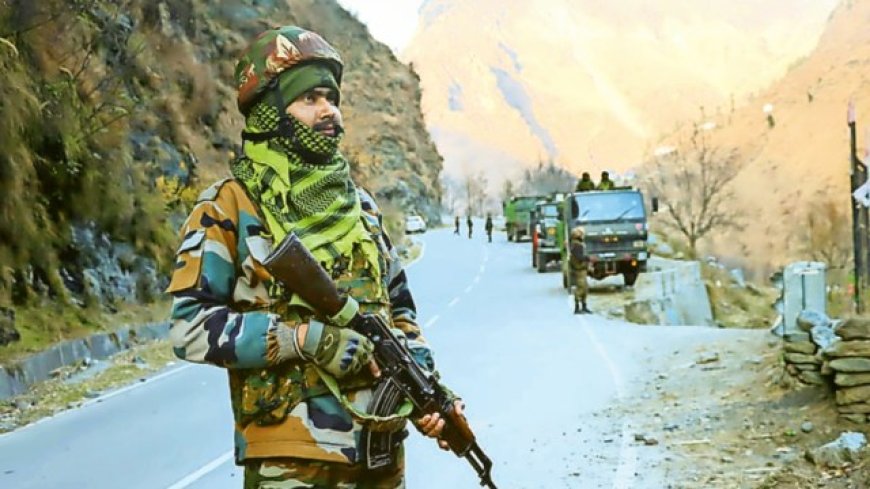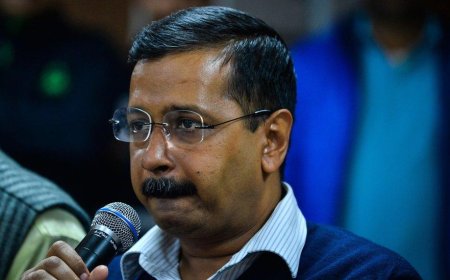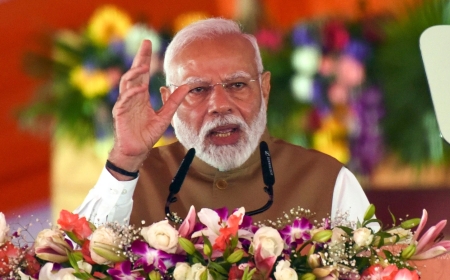Disengagement Process Begins at LAC in Ladakh: India and China Take Steps to Restore Peace
India and China initiate disengagement at key points along the LAC in Ladakh, starting the process to restore patrolling rights and ease border tensions. As both sides work to dismantle temporary structures, this agreement marks a critical step toward peace and stability in the region.

India and China have taken a significant step toward restoring peace along the Line of Actual Control (LAC) in eastern Ladakh. After over four years of military standoff, both sides have started the process of disengagement at two key friction points: the Depsang Plains and Demchok. This initial move marks the beginning of efforts to restore patrolling rights and reduce tension along the LAC.
Disengagement Details
According to sources within the Indian Army, the disengagement process began on Tuesday, following an agreement reached between the two countries on restoring patrolling rights. The disengagement at Depsang Plains and Demchok is expected to conclude by October 28-29, but given the challenging altitude and weather conditions, the process may require additional time.
The current focus is on dismantling temporary structures, such as prefabricated sheds and tents, set up by both sides over the past four years. These structures housed equipment, vehicles, and troops and are now being removed as part of the disengagement.
Agreement Scope
The disengagement process specifically targets Depsang Plains and Demchok, two areas with “legacy issues” that date back to before the 2020 standoff. Prior to this agreement, Chinese forces had restricted Indian access to Patrolling Points 10 to 13 in the Depsang Plains, and in Demchok, Chinese troops had set up near Charding Nullah. Unlike previous agreements that focused on other friction points, this deal solely addresses the concerns in Depsang and Demchok, aiming to restore each side’s ability to patrol these regions.
Ensuring Peace Through Patrolling
The agreement also includes measures to resume joint patrolling in the areas, with both sides reverting to positions held before April 2020. Troops will fall back to their respective posts, allowing pre-2020 patrolling activities to recommence. Regular meetings at the ground commander level will be held to ensure the smooth implementation of the disengagement.
To further avoid accidental confrontations, both armies will keep each other informed about their patrol activities in the region. This step, according to sources, is part of a larger plan to build mutual confidence and minimize the risk of any faceoffs.
Ongoing Verifications and Future Plans
Once the disengagement process concludes, both India and China will verify that the new positions comply with the agreed terms. Afterward, patrolling operations will formally resume under the conditions established by the latest agreement. Although the exact number of troops involved has not been disclosed, sources suggest that this disengagement is part of a broader plan to return to a pre-2020 status and foster a "mutually beneficial situation."
High-Level Diplomacy and Future Outlook
The disengagement process was preceded by diplomatic and military-level discussions. Foreign Secretary Vikram Misri and Northern Army Commander Lt. General M V Suchindra Kumar indicated that recent negotiations paved the way for this significant breakthrough. The agreement set the stage for a bilateral meeting between Indian Prime Minister Narendra Modi and Chinese President Xi Jinping at the BRICS Summit in Kazan, Russia, where both leaders reiterated the importance of maintaining peace along the border.
On a related note, External Affairs Minister S. Jaishankar highlighted that the agreement restores the foundation for peace and stability in the border areas, aiming to return to the pre-2020 conditions.
In a statement preceding the bilateral meeting, the Chinese government confirmed that both sides had “reached a solution” and pledged to work closely with India to implement the plan effectively. This historic agreement marks the first step toward de-escalation, with the hope of re-establishing trust and setting a long-term framework for peace along the LAC.
What's Your Reaction?
 Like
0
Like
0
 Dislike
0
Dislike
0
 Love
0
Love
0
 Funny
0
Funny
0
 Angry
0
Angry
0
 Sad
0
Sad
0
 Wow
0
Wow
0





































































